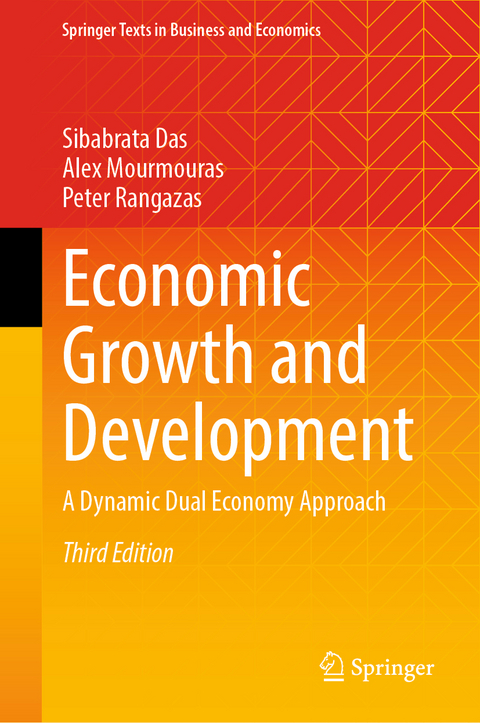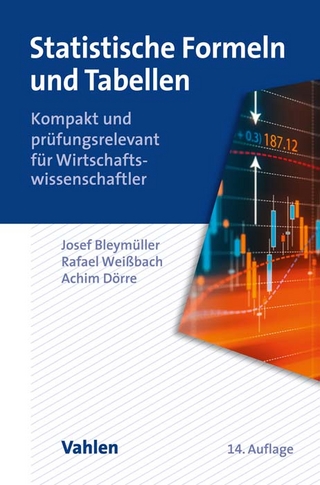
Economic Growth and Development
Springer International Publishing (Verlag)
978-3-031-59727-5 (ISBN)
Revised and updated for the third edition, this text is an introduction to the newer features of growth theory that are particularly useful in examining the issues of economic development. Growth theory provides a rich and versatile analytical framework through which fundamental questions about economic development can be examined. Structural transformation, in which developing countries transition from traditional production in largely rural areas to modern production in largely urban areas, is an important causal force in creating early economic growth, and as such, is made central in this approach. Towards this end, the authors augment the Solow model to include endogenous theories of saving, fertility, human capital, institutional arrangements, and policy formation, creating a single two-sector model of structural transformation. Based on applied research and practical experiences in macroeconomic development, the model in this book presents a more rigorous, quantifiable, andexplicitly dynamic dual economy approach to development. Common microeconomic foundations and notation are used throughout, with each chapter building on the previous material in a continuous flow.
The updated third edition includes two completely new chapters on government debt and growth slowdowns, topics that will be useful for undergraduate and graduate students studying development economics and macroeconomics.
Peter Rangazas is professor of economics at IUPUI. He regularly publishes in academic economics journals including the American Economic Review, Review of Economics and Statistics, Journal of Monetary Economics, and Journal of Economic Growth. He coauthored a second book in the Springer Texts in Business and Economics series, the Macroeconomics of Corruption.
Sibabrata Das has received his Ph. D. in Economics from University of Sussex, U.K.; and M.A. from Johns Hopkins University, U.S.A. Dr. Das has taught graduate courses in statistics, econometrics, microeconomics and development economics, at North Bengal University, Vidyasagar University, and Burdwan University, in India. As a research economist for the Ghana macroeconomic team at the World Bank, he has worked on macroeconomic modeling, and projections for various policy papers and country operations projects. As a member of the country teams, Dr. Dashas also actively participated in World Bank-IMF country missions in Ghana, Angola, and Grenada. As a staff member he has contributed to several of the World Bank-IMF publications over the years. Currently, at the International Monetary Fund, he works on various cross-country projects on growth, economic development, and important policy issues across the countries and regions of the world.
Alex Mourmouras is division chief in the Asia and Pacific department of the IMF where he has served as mission chief for Vietnam, Singapore and Malaysia. He was previously division chief in the IMF Institute for Capacity Development and economist in the Fund's Policy Development and Review and Fiscal Affairs Departments. Before joining the IMF, Dr. Mourmouras served as assistant and associate professor of Economics and director of graduate studies, all at the University of Cincinnati. He holds a Ph.D in economics from the University of Minnesota and a BA degree from Harvard College.
1. Overview.- Part I One-Sector Growth Models.- 2. Overlapping-Generations Model of Economic Growth.- 3. Fiscal Policy.- 4. Schooling and Fertility.- 5. A Complete One-Sector Neoclassical Growth Model.- Part II Two-Sector and Dual Economies.- 6.Two Sector Growth Models.- 7. Wage and Fertility Gaps in Dual Economies.- 8. Physical Capital in Dual Economies.- 9. A Complete Dual Economy.- Part III Additional Topics and Summary.- 10. Government Debt.- 11. Growth Slowdown.- 12.- Conclusion.
| Erscheinungsdatum | 03.09.2024 |
|---|---|
| Reihe/Serie | Springer Texts in Business and Economics |
| Zusatzinfo | XIII, 439 p. 27 illus., 14 illus. in color. |
| Verlagsort | Cham |
| Sprache | englisch |
| Maße | 155 x 235 mm |
| Themenwelt | Wirtschaft ► Volkswirtschaftslehre ► Makroökonomie |
| Schlagworte | dual economy • dynamic • Economic Development • Growth Theory • two-sector model |
| ISBN-10 | 3-031-59727-3 / 3031597273 |
| ISBN-13 | 978-3-031-59727-5 / 9783031597275 |
| Zustand | Neuware |
| Informationen gemäß Produktsicherheitsverordnung (GPSR) | |
| Haben Sie eine Frage zum Produkt? |
aus dem Bereich


